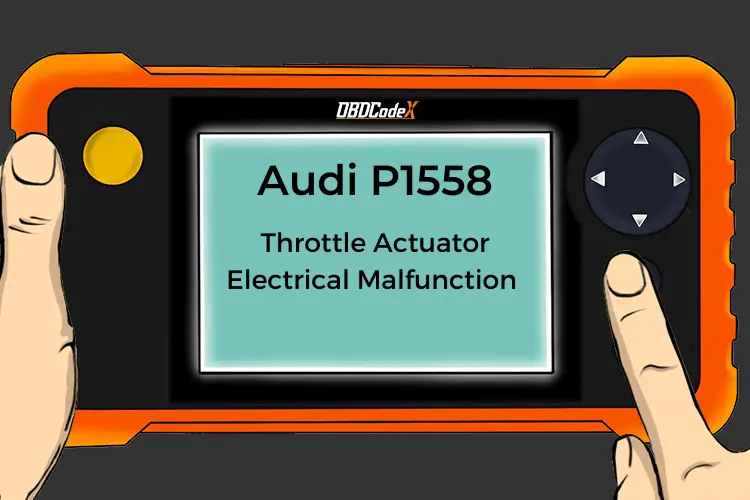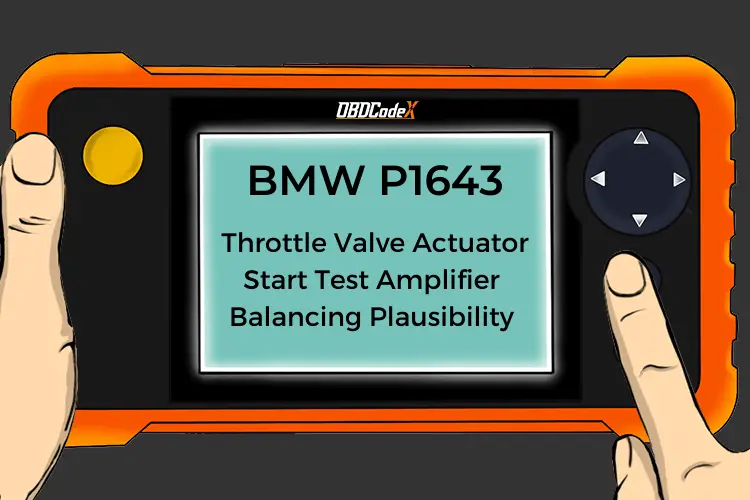P2101: Throttle Actuator A Control Motor Circuit Range Performance
Is your scanner showing P2101?
No worries. We'll show you what it means and how to deal with it.
P2101: Throttle Actuator A Control Motor Circuit Range Performance
OVERVIEWWhat Does The P2101 Code Mean?
The Throttle Actuator A (TA-A) is can usually be found mounted to the front of the engine, on top of the engine, inside the wheel wells or against the bulkhead. The TA-A is operated by an electrical signal from the Powertrain Control Module (PCM).
The PCM receives inputs to determine when and how long it needs to operate the TA-A. These inputs are voltage signals received from coolant temp, intake air temp, engine rpm and air conditioning system pressure sensors. Once the PCM has received these inputs it can modify the signal to the TA-A.
P2101 is typically set because of electrical (TA-A circuit) issues but can be caused by mechanical issues, such as a mechanically stuck throttle blade on the electrically driven Throttle Actuator. Both electrical and mechanical issues cannot be overlooked in the troubleshooting stage, especially when dealing with an intermittent problem.
Troubleshooting steps may vary depending upon manufacturer, type of TA-A and wire colors.
Related throttle actuator A control motor circuit codes:
- P2100 Throttle Actuator “A” Control Motor Circuit Open
- P2102 Throttle Actuator “A” Control Motor Circuit Low
- P2103 Throttle Actuator “A” Control Motor Circuit High
What Are The Symptoms Of The P2101 Code?
Symptoms of a P2101 engine code may include:
- Malfunction Indicator Light On
- Fixed idle speed
- Unable to accelerate engine
What Are The Potential Causes Of The P2101 Code?
Typically the causes for this code to set are:
- Open or short in the circuit to the Throttle Actuator – likely
- Failed Throttle Actuator – inoperative (mechanically or electrically) – likely
- Failed PCM – unlikely
How Serious Is This P2101 Code?
Severity is usually severe due to its impact on the cooling system. Because this is usually an electrical failure, the PCM cannot fully compensate for it.
Partial compensation usually means that the engine has a fixed idle speed (usually around 1000 – 1200 rpm).
How Can You Fix The P2101 Code?
Check a technical service bulletins (TSB)
A good starting point is always to check for technical service bulletins (TSB) for your particular vehicle. Your issue may be a known issue with a known fix put out by the manufacturer and can save you time and money during diagnosis.
Locate the Throttle Actuator A (TA-A)
Next, locate the Throttle Actuator A (TA-A) on your particular vehicle. This actuator is usually found mounted to the front of the engine, on top of the engine, inside the wheel wells or against the bulkhead.
Once located, visually inspect the connector and wiring. Look for scraping, rubbing, bare wires, burn spots or melted plastic. Pull the connector apart and carefully inspect the terminals (the metal parts) inside the connector.
See if they look burned or have a green tint indicating corrosion. Use electrical contact cleaner and a plastic bristle brush if cleaning of the terminals is needed. Let dry and apply electrical grease where the terminals contact.
If you have a scan tool, clear the diagnostic trouble codes from memory, and see if P2101 code returns. If it does not, then the connections were most likely your problem.
For this particular code, this is the most common area of concern, as are the relays / connections to the relays, with an actuator failure a close second.
Test the actuator and the associated circuits
If the code does return, we will need to test the actuator and the associated circuits. Typically, there are 2 wires at each Throttle Actuator. First, disconnect the harness going to the Throttle Actuator.
With a Digital Volt Ohm Meter (DVOM), connect one lead of the meter to one terminal of the actuator. Connect the remaining meter lead to the other actuator terminal. It should not be open or shorted. Verify the resistance specifications for your particular vehicle. If the actuator motor is either open or shorted (infinite resistance or no resistance/0 ohms), replace the Throttle Actuator.
Use the DVOM to throttle actuator power supply circuit
If that test passes, with a DVOM, check to make sure you have 12V to the Throttle Actuator power supply circuit (Red lead to the actuator power supply circuit, black lead to a good ground). With a scan tool that can activate the Throttle Actuator, turn on the Throttle Actuator. If there is no 12 volts to the actuator, repair the wiring from the PCM or relay to the actuator, or possibly a bad PCM.
If that’s OK, check to make sure you have a good ground at the Throttle Actuator. Connect a test light to 12V battery positive (red terminal) and touch the other end of the test light to the ground circuit going to the Throttle Actuator circuit ground. Using the scan tool to actuate the Throttle Actuator, see if the test light comes on each time the scan tool actuates the actuator. If the test light does not light up, this would indicate the problem circuit. If it does light up, wiggle the wiring harness going to the actuator to see if the test light flickers, indicating an intermittent connection.
If all prior tests have passed and you continue to get a P2101, this would most likely indicate a failed Throttle Actuator, although a failed PCM could not be ruled out until the Throttle Actuator had been replaced. If unsure, seek assistance from a trained automotive diagnostician. PCMs must be programmed, or calibrated to the vehicle in order to be installed correctly.
Recommended Parts
Below are some recommended auto parts to help you address the trouble code affecting your vehicle and get it running smoothly again:
>>> Throttle Actuator Control
>>> CrocSee 250 Pieces - Car Fuses Assortment Kit
>>> ECU
>>> INNOVA 5210
>>> KAIWEETS Digital Multimeter
Note: During the purchasing process, please check carefully whether the part you want to buy fits your car!
Check This Video For Reference
Reference Sources
Diagnostic Trouble Code (DTC) Charts and Descriptions for P2101 – Page 135.




